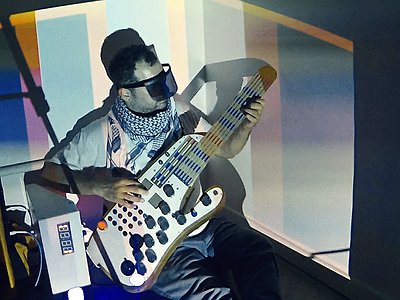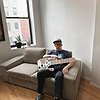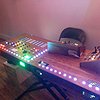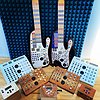Part 1
Name: Nick Demopoulos aka Smomid
Nationality: American
Occupation: Composer, sound artist, performer, improviser, instrument builder
Current Release: Smomid's Cyber Solstice is out via Dems Dem's Demos.
If you enjoyed this interview with Smomid, visit his official website for more information. He is also on Instagram, and Facebook.
You may also enjoy our Lica Mice interview with a fellow instrument designer and -builder.
What was building your first instrument like?
I took a class called “How to Build a Midi Controller” at a facility called the LEMURplex in Gowanus Brooklyn in 2009. LEMURplex stands for League of Musical Urban Robots. It was run by genius musician/artist Eric Singer. The attitude was this is a really easy thing to do, no big deal at all. Hook up some electrical components, if they don’t work hook up some different ones. So the very first instrument I built as a result of that class didn’t last long because there were so many crazy issues with using the wrong values of resistors that eventually destroyed some of the components.
But that attitude has kind of stuck with me when I build instruments. I experiment and try things out. I started collaborating with an electrical engineer in 2020 and he is showing me a lot of amazing tricks and how things are really supposed to be done. I’m definitely still learning and the available technology for making interactive musical instruments is advancing incredibly fast which makes things a lot easier.
Can you give us an overview of the different instruments you designed over the years?
I’ve built quite a few instruments. I’ve included a photo of my table instrument and a group photo of most of the other ones.
The main instrument that I use is called a Smomid, which stands for String Modeling Midi Device and is designed to enable a guitar player to interface with music software. I have built three of those that are shaped like a guitar, and one that’s in a table format that I sort of play like a lap steel guitar, but I use two hands and slide my fingers instead of using a slide.
Another type of instrument I’ve made I call a Pyramidi, which was initially inspired in shape by Aztec pyramids, but are MIDI controllers, and I’ve made four of those. I use the Pyramidis for controlling audio effects and to do live looping.
Other instruments I’ve made include a Robotic stand that has a moving arm, blinking lights and makes buzzing sounds, and a percussion instrument that I made out of a “Rock Band” toy drum set I found in the trash.
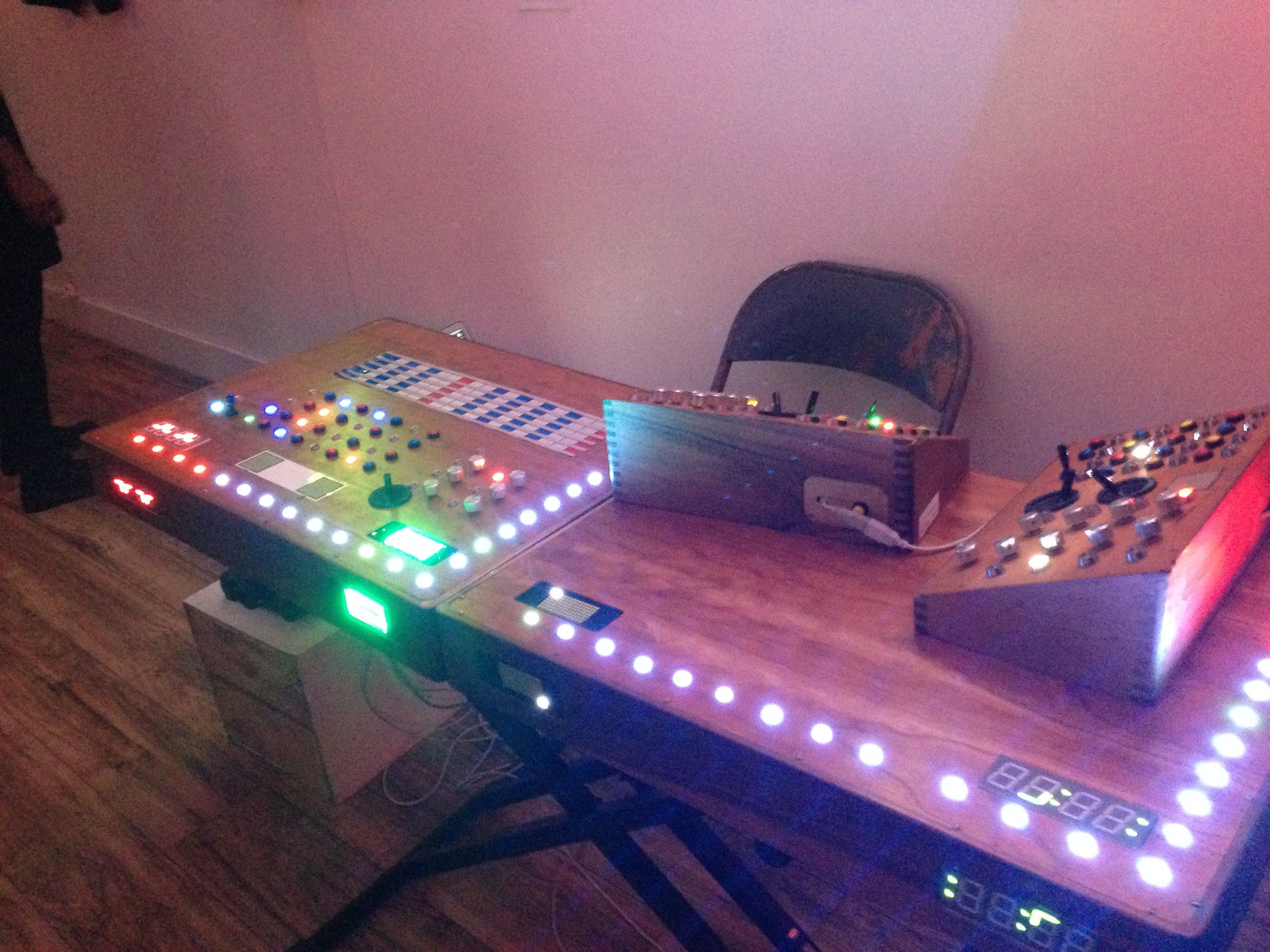
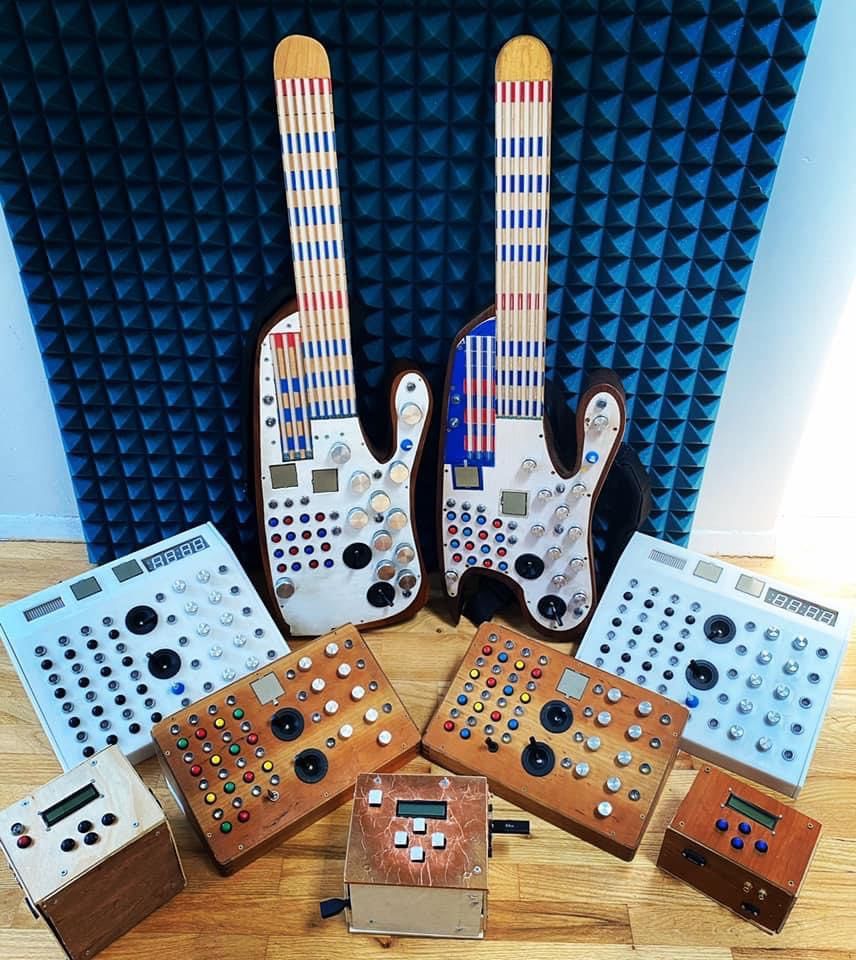
What are some of the features and expressive potentials that make the String Modeling Midi Device your most important tool?
One thing about the Smomid is that it has infinite sustain. On a guitar, when you pluck a note it immediately starts to decay. On a Smomid, I can hold a note out that it will sustain indefinitely.
Another thing I can do, which is very idiosyncratic to the music I make, is that I can outline scales and chords in many different patterns very rapidly in a type of arpeggiator mode. The types of melodies I play in this way might be impossible to play by a human because they are played so fast and may have large interval leaps.
In this arpeggiator mode sometimes I use software that analyses the notes I am playing. This data can them be used to play complementary bass notes or other melodies. You can hear this in the middle section of “Inceptionism” on Cyber Solstice where I am improvising and the bass is following everything I am doing.
What was the process of using these and other instruments for the composing and production process of your new album Cyber Solstice like?
Cyber Solstice was started in lockdown 2020, so I had a lot of time on my hands. I initially started with recording parts and layering lots of tracks together in a really experimental and irreverent way not thinking I would create an album out of this. Also I had my guitar in the same room as my electronic instruments I added that on some tracks as well.
My electronic instruments are all digital so I didn’t need any microphones to record them. They go from the software where they make sound directly into the recording device I use which is a Tascam DP 24 track digital recorder.
During lockdown I experimented with a lot of synthesis techniques and used those to get a lot of different sounds, which might have accentuated different harmonics of the notes I was playing. Many of the melodies on Cyber Solstice were played using several synth sounds layered together. I also have a sound that is more like a cello, in that it is a continuous string that you can slide around and be very expressive with.
On the song “Geophilia” I overdubbed a ton of voices and you can kind of hear a lot of the different synth sounds I use side by side throughout that track, especially toward the end of the track.
Are the instruments, composer or instrument builders who were an influence on you?
I read a book called Biomimicry: Innovation Inspired by Nature, by Janine Benyus a long time ago. The book is a little outdated now, but it put the idea into my mind to try and imitate the design concepts of nature.
After reading that book I got into modeling all my instruments in software and having them fabricated with a CNC machine. I think in the book she talks about how a spider makes the strongest fibers on earth and it’s coming out of a little insect, and compares that with 3D printers.
Nature is not wasteful and only uses what it needs so I try and adhere to that as much as I can. My newer instruments can be battery powered and run on solar power if I am playing somewhere outside in the daytime.
Also Eric Singer, who ran the LEMURplex, which I mentioned before, was a big inspiration when I started making instruments. Mostly his attitude that it’s easy and that anyone can do it. He’s built a lot of cool instruments and musical robots that are pretty inspiring.
I think the biggest inspiration is the moment we are having in history now. Since 2006, when the Arduino Microcontroller became available, there has been and explosion of commercially available technology and information to make your own things. You can get sensors for almost anything you want, there is now 3D printing where you can realize an idea you have almost instantly, there are Raspberry Pi computers, which are incredibly powerful, available for $35 and this is just naming a few things.
And all of these advancements are made to work together so for me it seemed easy to combine them all into one concept.
Did you ever get to perform on Harry Partch's instruments similar ones, like the Bertoia sculptures or self-built instruments by other designers? What were your impressions, both in terms of what they were bringing to the table and what was missing?
Let me just say, I love Harry Partch. I love his whole concept of music, body of work and the instruments he made. I read his book Genesis of a Music and that sent me off on so many ideas to research, including ancient Greek and Arabic music. Also, learning about his unique tuning system started to spin some wheels in my brain that made me come up with a tuning system I use sometimes (36 notes to the octave).
I am definitely fascinated by what other self-built instrument designers are doing. Some of the other self-build instrument designers I know are doing incredible things and I learn a lot from them. This includes Ken Butler, Terry Dame, Onyx Ashanti, Ed Potokar, and Max Abeles. I’ve never played any of Harry Partch’s instruments, but I have messed around on some of the people’s creations I named above.
I think the most beautiful thing about making instruments is that everyone does it differently and everyone customizes their creations for what they need. I think some people hate computers so they don’t use them, but I like to use computers. Some people make massive beautiful sculptural type instruments, but I like to have my instruments as compact and portable as possible.
I think what all of these people are brining to the table is getting over the fear that what they make might suck, being willing to experiment, wanting to express themselves with a unique artistic voice, and taking full advantage of what’s available. And what I mean by what’s available includes what you might find in the trash, what you might find in your backyard, the latest fastest new microcontroller, or something you can 3D print yourself.
Francesco Tristano told me: “The piano is a synthesizer.” I've never been entirely convinced about that statement. If you look at traditional instruments like the piano or violin, what's your take on them when it comes to their ability to realise your creative vision(s)?
With a synth you can customize the sound a bit and have lots of sustain if you need it. With a piano, while you can put paper clips and coins on the strings like John Cage did, you can’t really customize it that much. It was designed to play notes that will decay and the notes don’t evolve much like they could with a synth.
My take is that a lot of instruments, like the acoustic guitar for instance, were designed to do a certain thing. It takes some work to get them to do something different. I would rather start with an instrument that’s more customizable to realize my vision than to put in a ton of time to make an acoustic guitar or piano bend to what I want.
I would like to add though, that traditional acoustic instruments are really great to compose with or improvise ideas on. I can have a musical idea and hear it right away with a guitar. I also learned almost everything I know about music from practicing guitar, so in my opinion traditional instruments are the best way to learn about harmony, melody, improvising and how to play music.
Were you ever interested in the prepared piano or similar approaches?
For myself I’m not too interested in altering other instruments, just because I sort of have a system I like for making instruments. But I do have a John Cage Prepared Piano sample pack that I have been using on various things for decades.
I have to admit, I am also attracted to the fact that I make electronic instruments with no acoustic properties at all. If they break I can’t make any sound at all. That kind of risk and faith that I have in my instruments is a little powerful to me.




